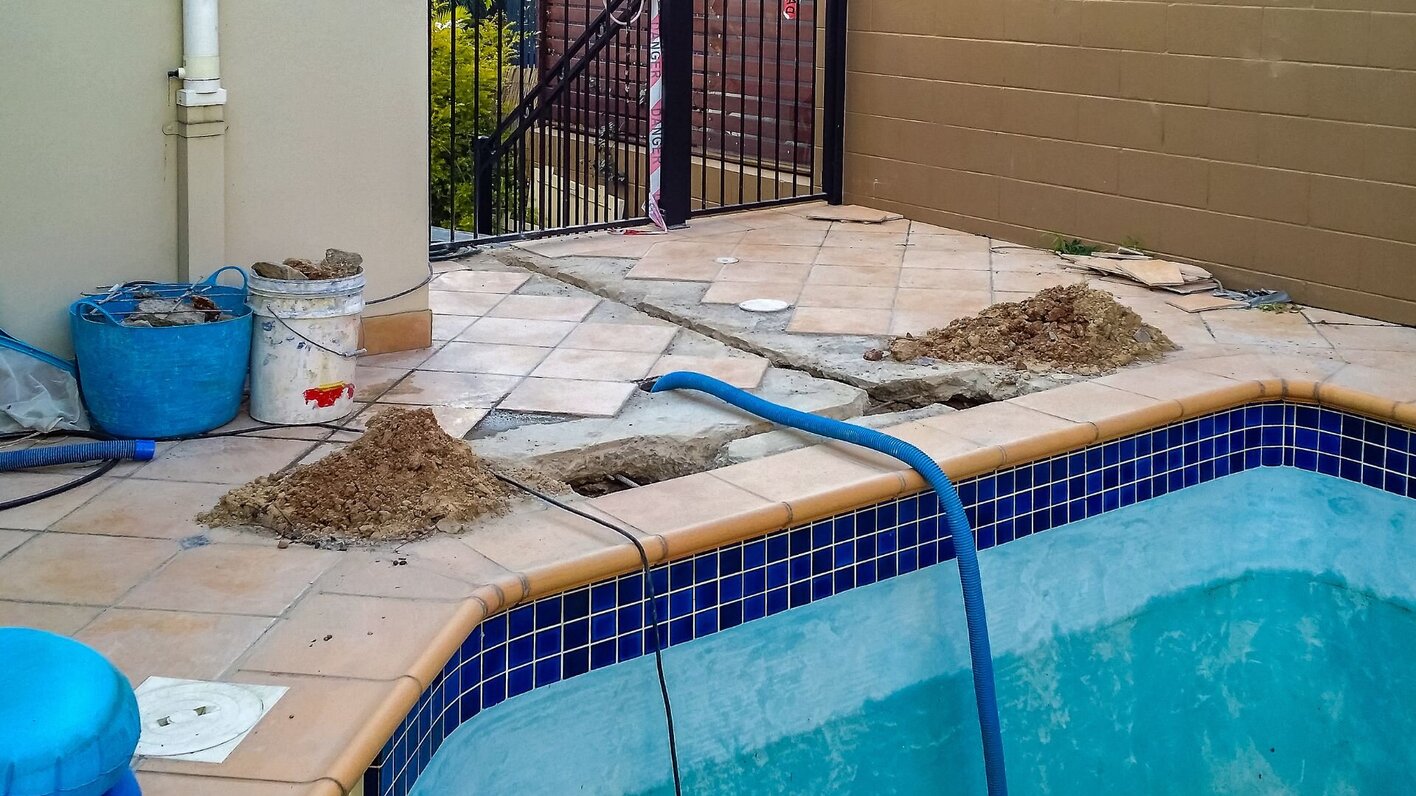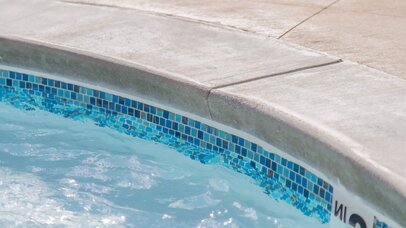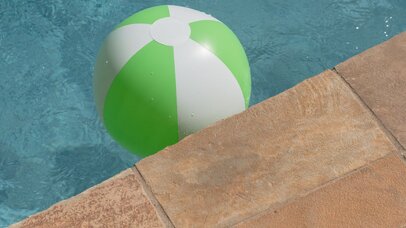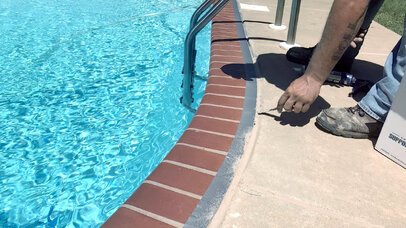Pool coping, the protective cap on the edge of your swimming pool, plays a pivotal role in safeguarding the structural and aesthetic integrity of the pool area. This critical component ensures that the pool walls and the pool deck are seamlessly integrated, preventing water from penetrating behind the pool shell. However, movement and cracking in pool coping tiles can quickly lead to more extensive damage if not addressed promptly.
These common complications affect the durability of a concrete pool deck and the pool structure and compromise the beauty of your backyard oasis.
This guide will look into practical strategies for repairing and maintaining pool coping, focusing on practical solutions to tackle these challenges. We will cover various aspects, from the installation process to addressing expansive soils that can shift concrete slabs, influencing the stability and appearance of your pool.
What Exactly Is Pool Coping?
Pool coping is the protective border installed around the upper edge of a swimming pool, which is crucial for shielding the pool structure. It serves the dual purpose of enhancing the visual appeal of the pool area and ensuring the integrity of the pool walls by directing splash-out water into adjacent drains instead of behind the pool shell.
Coping can be made from various materials, including stone, concrete, and tile. Each material offers distinct advantages and challenges. Stone coping provides a durable and aesthetically pleasing finish but can be susceptible to weathering. Concrete is widely favoured for its strength and versatility but may crack as it expands and contracts with temperature changes. Tile offers a sleek appearance and is available in many designs, yet it may suffer from loosening grout or tiles over time.
External factors such as weather conditions and the frequency of pool use also influence the durability of these materials. Expansion joints are critical in managing the natural expansion of concrete slabs, reducing the potential for cracking. Additionally, the bond beam must be robust and well-maintained to support the weight of coping stones, especially in expansive soil areas where ground movement is more prevalent.
Regular maintenance and understanding the installation process are vital for preserving the longevity and appearance of pool coping. Addressing early signs of wear, like small cracks or loose tiles along the tile line, is essential for preventing larger issues and ensuring the pool deck remains safe and visually appealing.
Causes of Coping Movement and Cracking
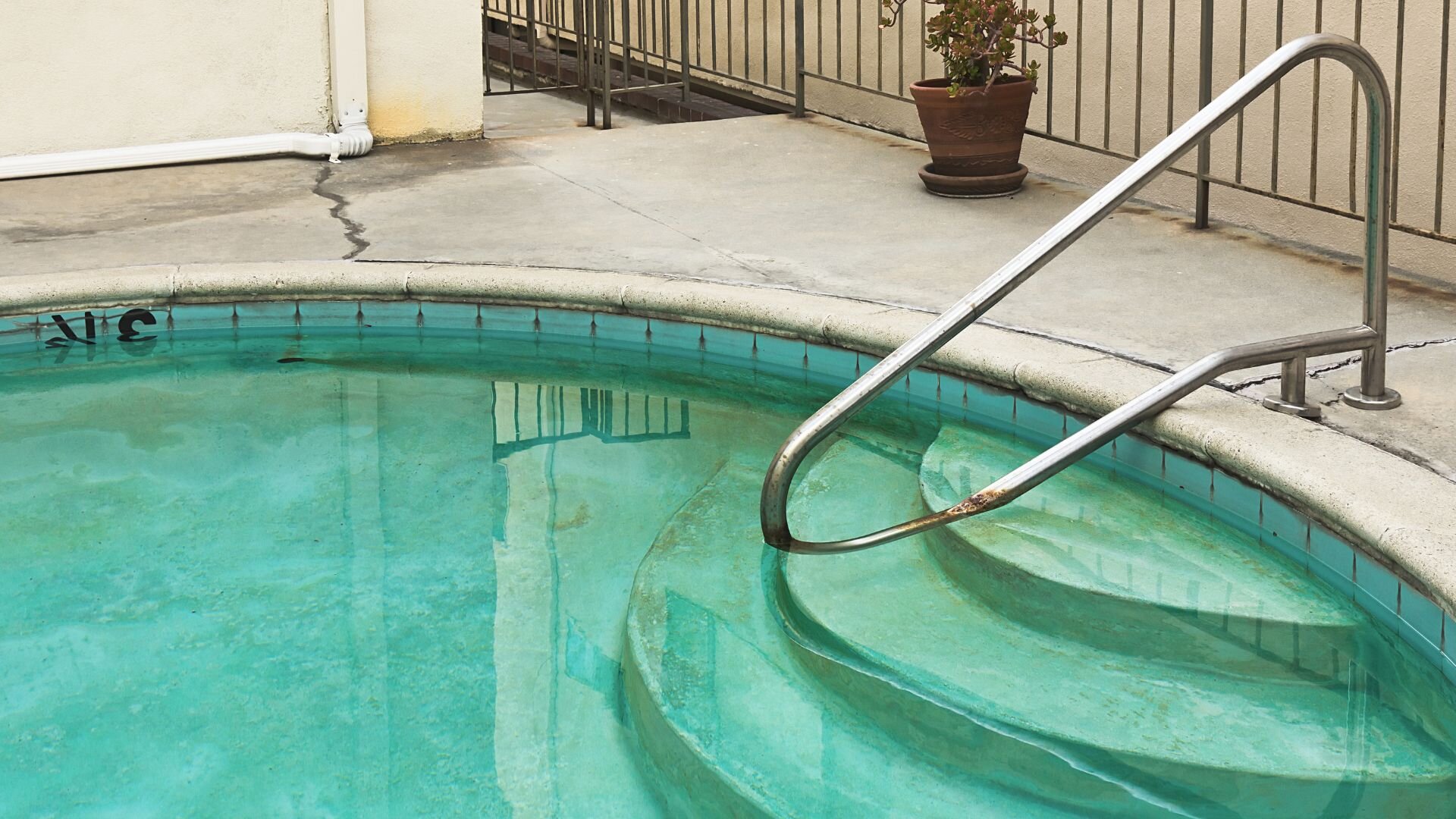
Ground Movement and Temperature Effects
Coping movement and cracking are often the result of several interrelated factors. Ground movement is a primary cause, particularly in areas with expansive soil that swells or shrinks depending on moisture levels.
This soil movement can destabilise the pool foundation, causing shifts that impact the pool coping and deck. Temperature fluctuations also play a significant role—concrete, stone, and tile expand and contract with temperature changes, potentially leading to cracks if not accommodated by properly placed expansion joints.
Installation and Material Degradation
Improper installation is another critical factor. If the bond beam is not constructed robustly or if the coping material is not securely affixed, the integrity of the coping can be compromised. For instance, inadequate mortar application or failure to use a flexible mastic in the joints can prevent the coping from accommodating movement and lead to cracking.
Material degradation over time also contributes to coping issues. For example, the stone may erode under constant exposure to pool chemicals and sunlight, weakening its structure. Similarly, the grout between pool coping tiles can degrade, loosening tiles and creating gaps.
Impact and Environmental Damage
Impact damage from dropped objects or heavy foot traffic can directly crack tiles or stone coping. In colder climates, the freeze-thaw cycle is particularly damaging. Water seeps into tiny cracks or joints, freezes, and expands, widening the cracks—a process that can repeat through the winter, gradually worsening any initial damage.
Repair Techniques for Pool Coping

Repairing Minor Cracks
To address minor cracks in coping, follow these steps:
- Clean the Area: Begin by removing any debris from the crack using a stiff brush or blower to ensure the filler adheres properly.
- Apply a Concrete Filler: Use a concrete filler or mastic suitable for outdoor use. Fill the crack thoroughly to prevent water ingress, which can exacerbate the damage.
- Seal the Repair: Once the filler has cured, apply a sealant over the repaired area to protect it against water and chemical exposure.
This method is effective for small cracks where structural integrity is not compromised.
Repairing Major Cracks
For more significant damage, consider these steps:
- Assess the Damage: Evaluate whether the coping can be repaired or needs replacement. If the damage is extensive, consult a professional.
- Remove Damaged Coping: Carefully remove sections of broken coping using appropriate tools. This might involve lifting tiles or pavers from the edge.
- Prepare the Base: Ensure the bond beam and mortar bed are intact and stable. If necessary, repair them with concrete or a suitable mortar mix.
- Install New Coping: Set new coping stones or tiles using a high-quality adhesive mortar. Ensure they align with the existing coping.
- Fill Joints: Apply flexible mastic in joints between the coping materials to accommodate future movement without cracking.
Stabilisation Techniques
To prevent future movement and cracking:
- Install Expansion Joints: Fit expansion joints around the pool deck, especially where the deck meets the coping. This setup allows for natural movement of materials due to temperature changes and can prevent cracking.
- Reinforce the Structure: To enhance stability, reinforce the underlying bond beam or add additional support to the pool wall where necessary.
DIY Solutions and Professional Assistance
Many minor repairs, such as filling small cracks or gaps, can be performed DIY using readily available repair kits. However, professionals should handle significant repairs involving structural concerns or the replacement of large sections of coping. Structural engineers or experienced pool repair contractors can provide the necessary expertise and ensure that repairs meet safety standards.
It is crucial for pool owners to understand when to tackle repairs themselves and when to call in experts. DIY solutions are suitable for cosmetic fixes and simple preventive measures. In contrast, professional help ensures that more complex repairs are performed correctly, safeguarding the longevity and safety of the pool.
Preventative Measures and Routine Maintenance for Pool Coping
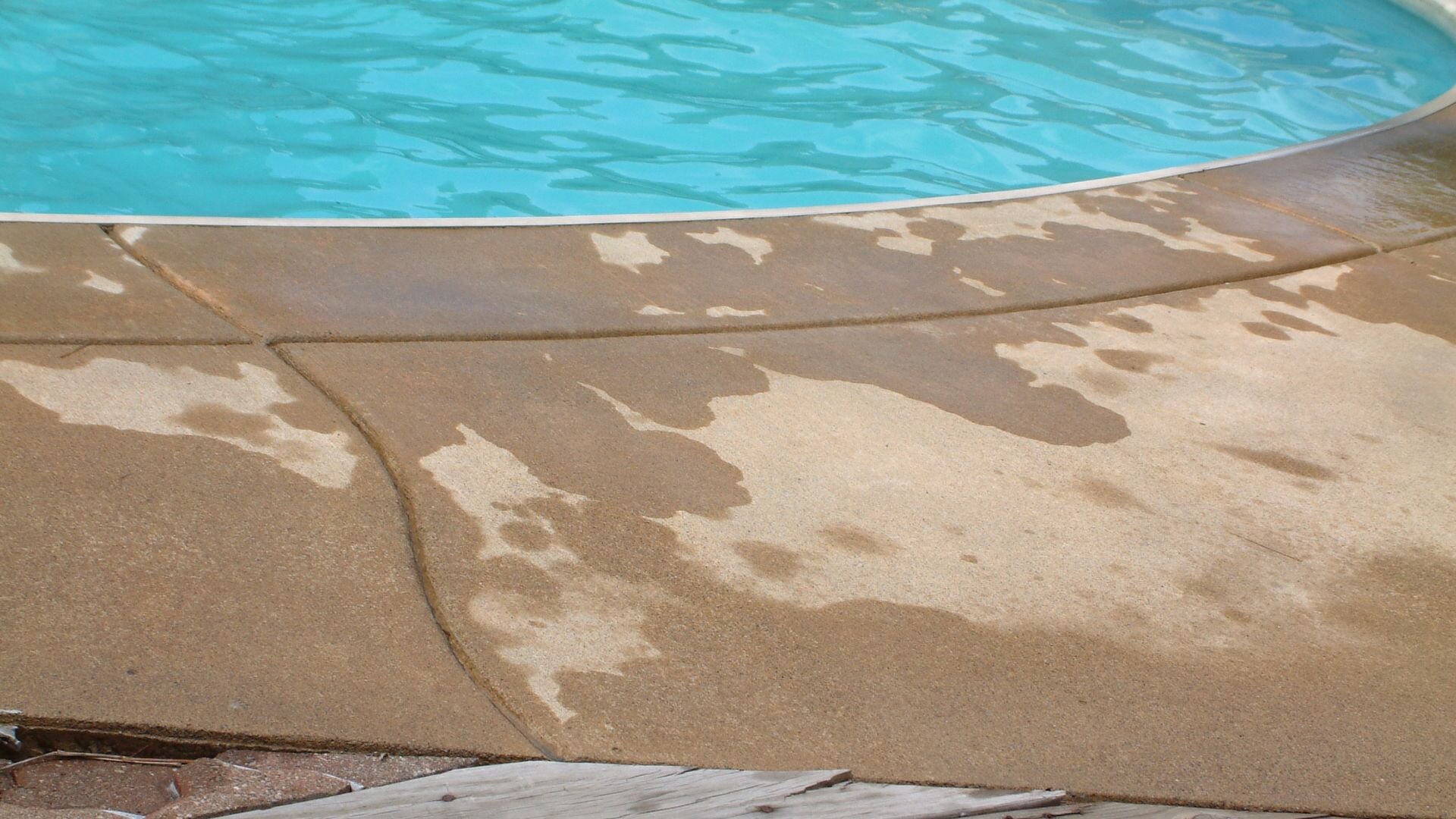
Regular Maintenance Routines
Maintaining the integrity of pool coping requires consistent attention to prevent issues from developing or worsening. Here are some effective maintenance routines:
- Regular Cleaning: Keep the coping clear of debris, such as leaves and dirt, which can retain moisture and lead to the degradation of mortar and concrete. Use a soft brush and mild detergent to clean the surface without damaging it.
- Seal Coping: Apply a water-resistant sealant to the coping annually. This helps protect the material, whether brick, concrete, or stone, from water penetration and chemical damage.
- Check and Repair Joints: Inspect the joints between coping stones for signs of wear or gaps. A suitable joint filler or a backer rod, followed by mastic, will be used to repair deficiencies. This prevents water from seeping underneath the coping, which can cause significant damage over time.
Protecting Coping During Extreme Weather
In areas prone to extreme weather, additional protective measures are crucial:
- Weatherproof Covers: During harsh weather like tropical cyclones or extreme heat, use weatherproof covers to protect the coping and pool deck from severe elements like hail or heavy rain.
Routine Inspections and Early Detection Tips
Regular inspections play a vital role in the longevity of pool coping. Here’s what to look for during an inspection:
- Cracks and Gaps: Look for new or widening cracks within the coping or where it meets the pool deck. Early detection and repair of these cracks are crucial to prevent further damage.
- Loose Coping: Check for movement or instability in the coping stones or tiles. This can indicate issues with the underlying mortar or bond beam.
- Signs of Erosion: Assess the area for signs of erosion or settling around the pool, which could affect the stability of the coping.
It is advisable to schedule a professional inspection with a structural engineer or a qualified pool technician at least once a year. They can provide a comprehensive assessment and identify potential issues that might not be obvious to the untrained eye.
Adopting these maintenance and inspection routines will help ensure the durability and safety of your pool coping, significantly reducing the likelihood of costly repairs or replacements in the future.
Keep Your Pool in Top Shape
Keeping your pool coping in top condition is crucial for its longevity and safety. Regular cleaning, sealing, and joint maintenance are essential to prevent damage and preserve the integrity of the coping material. Protect your pool from extreme weather with appropriate covers, and stay vigilant for any signs of cracks, loose materials, or erosion.
Proactive maintenance and timely repairs are vital to ensuring your pool remains a safe and stunning feature of your home.
If you’re unsure about handling repairs or notice significant damage, don’t hesitate to contact The Pool Co for a professional assessment and expert pool coping services. Let us help you keep your pool perfect all year round!
